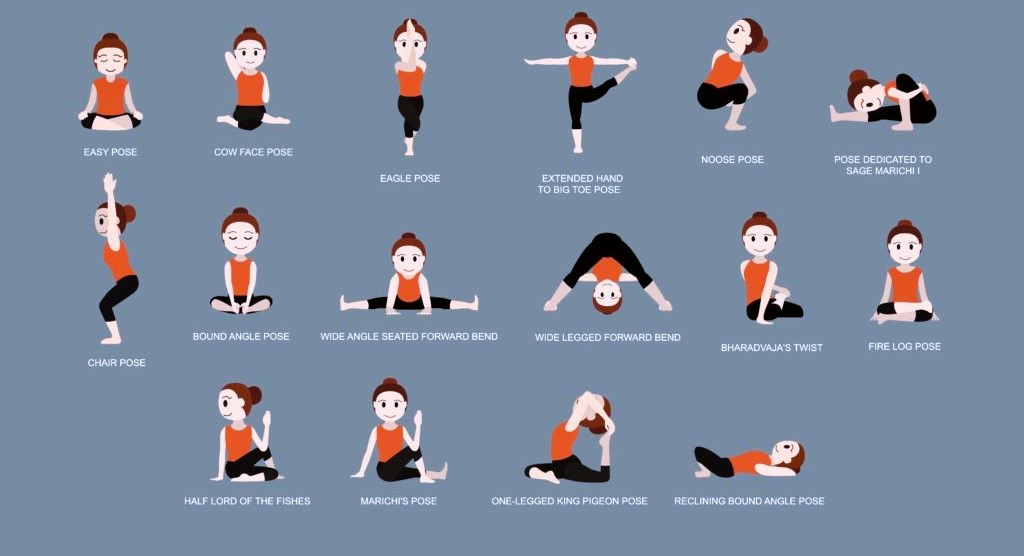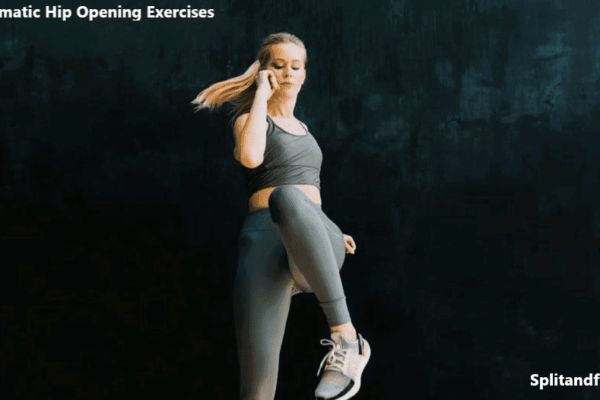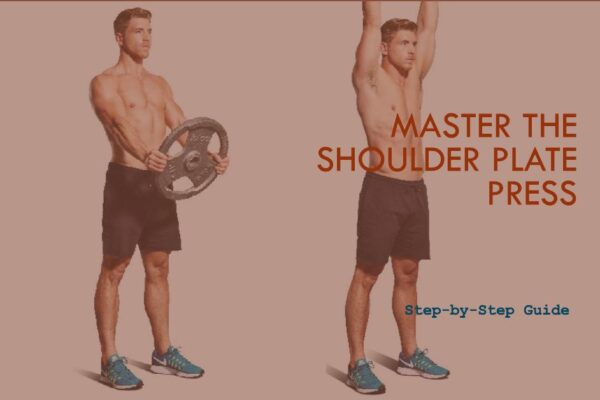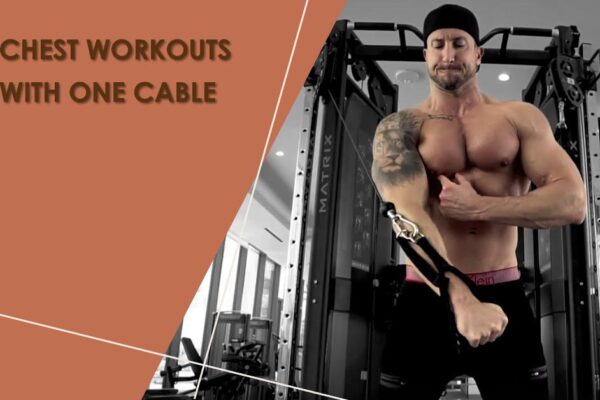What are Somatic Hip Opening Exercises?
Somatic Hip Opening Exercises refer to a series of conscious, deliberate, and self-aware movements aimed at enhancing hip flexibility and joint mobility. These exercises are rooted in Somatic Education, a bodywork discipline that emphasizes internal physical perception and experience. The goal is to reintroduce the body to its natural movement patterns, free from the habitual constraints imposed by modern lifestyle or past injuries.
Through a process of kinesthetic sensing, you learn to recognize and release tension in the hip joint, improve its mobility and flexibility, and ultimately, foster better posture and body mechanics. Practicing somatic hip opening exercises can also help alleviate pain caused by tension and stiffness in the hips.

Importance of Somatic Hip Opening Exercises
Somatic Hip Opening Exercises play a crucial role in maintaining the health and functionality of the hip joint, which is central to overall body mobility. In our everyday activities like walking, bending, or even sitting, the hips are engaged and over time, may become stiff or tense due to inadequate movement or incorrect posture. This stiffness can potentially lead to discomfort, pain, and limited mobility.
By regularly practicing somatic hip opening exercises, we can promote improved hip flexibility, reduce tension and the risk of injury, and enhance overall body awareness. These exercises foster better body mechanics and posture, aiding in efficient movement and balance.
Overview of the article
In this document, we will discuss the importance of having a flexible and mobile hip joint, and how somatic exercises can help achieve this. Somatic exercises are a form of movement therapy that focuses on releasing tension and improving body awareness through gentle, mindful movements. These exercises can help you release tightness and improve mobility in your hip joint, leading to improved posture and reduced risk of injury.
Whether you are an athlete looking to enhance performance or someone struggling with everyday tasks due to hip stiffness, somatic hip opening exercises can benefit anyone looking to improve their range of motion.
Anatomy of the Hip Joint
To understand the importance of somatic hip opening exercises, it is essential to have a basic understanding of the anatomy of the hip joint. The hip joint is a ball-and-socket joint located where the thigh bone (femur) meets the pelvis. It consists of the femoral head (the ball-shaped top of the femur) and the acetabulum (the socket of the pelvis). The joint is held together by ligaments, tendons, and muscles that provide stability and allow for movement. However, when these muscles become tight or imbalanced, it can restrict the range of motion in the hip joint, leading to pain and discomfort.

Importance of Hip Mobility
The hip joint is an essential part of the body, responsible for key movements such as walking, running, and sitting. However, due to our sedentary lifestyles and prolonged periods of sitting, the hip joint can become stiff and tight over time. This can lead to discomfort, pain, and even injury in some cases. Having a mobile hip joint not only improves overall movement and performance but also helps maintain proper alignment of the body. Additionally, having flexible hips can alleviate back pain and prevent hip-related injuries.
Benefits of Somatic Hip Opening Exercises
Practicing somatic hip opening exercises can bring several benefits to the body. One of the main benefits is improved mobility in the hips, which allows for better movement patterns and reduces the risk of injury. It also helps release tension and tightness in the muscles surrounding the hip joint, promoting relaxation and reducing pain. Additionally, these exercises can improve posture by correcting
- Enhanced Mobility: Regular practice of hip-opening exercises enhances the range of motion in the hip joint. This leads to improved movement patterns, contributing to better balance and coordination.
- Tension Release: These exercises effectively release stored tension and tightness in the hip muscles, offering relief from discomfort and pain.
- Injury Prevention: By improving flexibility and strength, hip-opening exercises reduce the risk of hip-related injuries and strains, making daily activities and exercise safer.
- Posture Improvement: They play a significant role in correcting alignment and posture, helping to alleviate associated issues such as back pain and muscle imbalances.
- Stress Reduction: As a form of mindful movement, these exercises also contribute to stress and anxiety reduction, promoting overall mental well-being.
- Better Circulation: They can enhance blood circulation in the lower body, promoting healing and recovery in the muscles and joints.
Types of Somatic Hip Opening Exercises

Hip opening exercises are a form of somatic movement that focuses on the hip joints and surrounding muscles to promote flexibility, strength, and overall well-being. In this detailed guide, we will explore the various types of hip opening exercises, their benefits, and how to incorporate them into your daily routine.
Standing Lunge Stretch
The Standing Lunge Stretch is a simple yet effective exercise to stretch your lower body muscles. To perform it, follow these steps:
- Begin in a standing position with your feet hip-width apart.
- Take a step forward with your right foot, keeping your left foot planted.
- Lower your body by bending both knees until your right thigh is parallel to the ground.
- Hold this position for 20-30 seconds, feeling a stretch in your right hip flexor and left hamstring.
- Repeat on the other side by stepping forward with your left foot.
Remember to breathe deeply and maintain good posture throughout the stretch. Enjoy the benefits of this rejuvenating exercise!
Kneeling Hip-flexor Stretch
The kneeling hip flexor stretch is an effective exercise for improving flexibility and mobility in the hip flexor muscles. It targets the muscles in the front of the hip and can help alleviate tightness and discomfort in this area.
- Start by kneeling on a soft surface, placing one knee on the ground and the other foot flat on the floor in front of you.
- Keep your torso upright and engage your core muscles for stability.
- Slowly shift your weight forward, moving your hips slightly forward and down until you feel a stretch in the front of your hip and thigh of the kneeling leg.
- Hold the stretch for 20-30 seconds, while maintaining a steady breathing pattern.
- Release the stretch and switch legs, repeating the exercise on the other side.
(Note: Remember to consult with a healthcare professional before starting any new exercise program, especially if you have any pre-existing conditions or injuries.)
Spiderman Stretch
Spiderman Stretch is a popular exercise that targets the hips, core, and upper body. It is named after the iconic superhero due to its resemblance to the pose he often strikes while climbing walls. This exercise helps improve flexibility, strength, and overall mobility.
- Start in a push-up position with your hands directly under your shoulders and your toes on the ground.
- Bring your right foot forward and place it outside of your right hand, keeping your knee in line with your ankle.
- Lower your left knee to the ground, keeping your hips square and your back flat.
- Gently shift your weight forward, feeling a stretch in your right hip and groin.
- Hold the stretch for 30 seconds, focusing on deep breathing and relaxing any tension.
- Repeat on the other side, bringing your left foot forward and following the same steps.
- Alternate between sides for a few repetitions, gradually increasing the duration of each stretch.
Remember to listen to your body and modify the stretch as needed. Enjoy the benefits of the Spiderman Stretch for improved hip mobility and flexibility!
Clamshells
Clamshells are a type of exercise that targets the muscles of the hips and glutes.
- Lie on your side with your legs stacked on top of each other.
- Bend your knees to a 90-degree angle and keep your feet together.
- While keeping your feet together, lift your top knee as high as you can without rotating your hips or pelvis.
- Pause for a moment at the top, then slowly lower your knee back down.
- Repeat the movement for the desired number of repetitions.
- Switch sides and repeat the exercise on the other side.
Note: Clamshells are great for targeting the muscles of the hips and glutes. Make sure to maintain proper form and engage your core throughout the exercise.
Horizontal Squat Stretch
The horizontal squat stretch is a beneficial exercise that helps improve flexibility and mobility in the lower body.
- Start by standing with your feet slightly wider than shoulder-width apart.
- Lower your body down into a squat position, keeping your back straight and your knees in line with your toes.
- Place your hands on the ground in front of you, shoulder-width apart.
- Slowly shift your weight to one side and extend the opposite leg straight out to the side.
- Hold this position for a few seconds, feeling a stretch in your inner thigh and hip.
- Return to the starting position and repeat on the other side.
- Continue alternating sides for a desired number of repetitions or times.
Remember to breathe deeply and listen to your body, adjusting the stretch as needed.
Butterfly Stretch
The Butterfly Stretch is a simple yet effective exercise that targets the muscles in your hips, inner thighs, and lower back. It involves sitting on the floor, bringing the soles of your feet together, and gently pressing your knees towards the ground. This stretch can help improve flexibility and mobility in the lower body.
- Sit on the floor with your legs extended in front of you.
- Bend your knees and bring the soles of your feet together, allowing your knees to fall out to the sides.
- Hold onto your ankles or feet with your hands.
- Sit up tall and engage your core.
- Gently press your knees down towards the floor, feeling a stretch in your inner thighs.
- Hold the stretch for 20-30 seconds while maintaining a relaxed and steady breathing pattern.
- Slowly release the stretch and return to the starting position.
- Repeat the butterfly stretch as desired to improve flexibility in your hips and lower body.
Malasana/Yogi Squat
Malasana, also known as Yogi Squat, is a yoga pose that involves squatting down with the feet close together and the heels on the ground.
- Stand with your feet slightly wider than hip-width apart.
- Lower your body down into a squat position, keeping your heels on the ground.
- Bring your palms together at your chest, using your elbows to gently push your knees apart.
- Keep your chest lifted and your spine straight.
- Hold this position for a few breaths, focusing on deepening the stretch in your hips and groin.
- Slowly release and come back to a standing position.
- Repeat as desired.
Happy Baby Pose
Happy Baby Pose is a yoga asana that involves lying on your back and bringing your knees towards your chest, allowing you to gently stretch your hips, lower back, and inner thighs.
- Lie flat on your back on a yoga mat or comfortable surface.
- Bend your knees and bring them towards your chest.
- Spread your knees apart, keeping them wider than your torso.
- Grab the outsides of your feet with your hands.
- Flex your feet and gently pull them towards the floor.
- Relax your shoulders and lengthen your spine.
- Stay in this pose for several breaths, enjoying the stretch.
- To release, gently let go of your feet and bring your knees back together.
- Repeat as desired for a relaxing and rejuvenating experience.
Reclined Bound Angle Pose
Reclined Bound Angle Pose is a restorative yoga pose that offers a range of benefits for the body and mind.
- Start by lying on your back with your knees bent and your feet flat on the floor.
- Bring the soles of your feet together and allow your knees to fall out to the sides, creating a diamond shape with your legs.
- Slowly recline your upper body onto the floor, using your arms for support if needed.
- Relax your shoulders and allow your arms to rest comfortably by your sides.
- Close your eyes and take deep breaths, allowing your body to relax and sink into the pose.
- Stay in this pose for a few minutes, focusing on deepening your breath and releasing any tension in your body.
- When you’re ready to come out of the pose, gently bring your knees back together and slowly roll onto one side, using your hands to push yourself up into a seated position.
Note: This pose can be modified by using props such as blankets or blocks to support your knees or back if needed.
High Lunge
High Lunge is a yoga pose that offers a deep stretch and strengthens the legs and core.
- Start by standing with your feet hip-width apart.
- Take a big step forward with your right foot and bend your right knee, ensuring it is directly above your ankle.
- Extend your left leg behind you and keep it straight.
- Raise your arms overhead, reaching towards the ceiling.
- Keep your chest lifted and your spine straight.
- Hold this position for a few breaths.
- Repeat on the other side by stepping forward with your left foot.
- Enjoy the stretch and benefits of the High Lunge pose.
Low Lunge
Low Lunge is a yoga pose that stretches the hip flexors and strengthens the legs.
- Start in a standing position with your feet hip-width apart.
- Take a big step forward with your right foot, keeping your left foot in place.
- Bend your right knee and lower your body down into a lunge position. Make sure your right knee is directly above your ankle.
- Rest your hands on your right thigh or place them on the floor on either side of your right foot for support.
- Keep your chest lifted and your back straight.
- Hold this position for a few breaths, then switch sides and repeat with your left leg forward.
Note: Remember to listen to your body and modify the pose as needed.
Three-Legged Downward-Facing Dog
Three-Legged Downward-Facing Dog is a yoga pose that involves balancing on three limbs while stretching and strengthening the body.
- Begin in a tabletop position with your hands and knees on the mat, aligning your wrists under your shoulders and your knees under your hips.
- Lift your right leg up and extend it straight back, keeping your hips square to the mat.
- Flex your right foot and engage your leg muscles to create a straight line from your hands to your heel.
- Press firmly into your hands and lift your left heel off the mat, keeping your left leg straight.
- Maintain a strong and stable core, while simultaneously lengthening through your spine.
- Hold this position for a few breaths, focusing on keeping your body aligned and your breath steady.
- To release, gently lower your right leg back down to the mat and return to the tabletop position.
Repeat the same steps with your left leg to balance the pose.
Lying Hip Rotations
Lying Hip Rotations is an exercise that targets the hip muscles and helps improve flexibility and mobility.
- Lie on your back with your legs extended.
- Bend your knees and place your feet flat on the floor.
- Keep your arms relaxed by your sides.
- Slowly lower both knees to one side while keeping your upper body flat on the ground.
- Pause for a moment, then return your knees to the starting position.
- Repeat the movement on the other side.
- Continue alternating sides for the desired number of repetitions.
Remember to breathe deeply and maintain a controlled movement throughout the exercise.
Beginner’s Guide to Somatic Hip Opening Exercises
If you are new to somatic hip opening exercises, it is important to start slowly and listen to your body. Here are some tips for beginners:
- Start with gentle stretches: Begin with basic hip stretches such as the butterfly stretch, reclined bound angle pose, and happy baby pose. These will help you become more aware of your body and its movements.
- Listen to your body: If you feel any discomfort or pain while performing a hip opening exercise, ease off or stop altogether. It is important not to force any movements that your body is not ready for.
- Incorporate it into your daily routine: Set aside a designated time each day to practice somatic hip openers. This will help you build consistency and see progress over time.
- Focus on your breath: As you perform each exercise, focus on your breath and try to relax any tension in your body. This will help deepen the stretch and release any tightness in your hips.
- Seek guidance from a professional: If you are unsure about how to properly perform somatic hip opening exercises, it is always best to seek guidance from a professional yoga or somatic movement instructor. They can help you with correct alignment and modifications based on your individual needs.
- Be patient: Somatic hip openers require patience and consistent practice to see results. Do not get discouraged if you don’t notice immediate changes in your flexibility, as it takes time for the body to release tension and tightness.
- Use props as needed: Don’t be afraid to use props such as blocks, straps, or blankets to support your body during somatic hip opening exercises. These can help you find the proper alignment and make the stretches more accessible for your body.
- Incorporate other forms of movement: Somatic hip openers are just one type of exercise that can benefit your hips. It’s important to also incorporate other forms of movement, such as cardiovascular exercise and strength training, to maintain overall hip health.
Common Mistakes to Avoid
Some common mistakes when it comes to somatic hip opening exercises include using improper form, pushing too hard too soon, and not listening to your body’s limitations. To avoid these mistakes, make sure to follow proper form and alignment cues, progress gradually in your practice, and always listen to your body’s signals.
- Remember the mind-body connection: Somatic hip opening exercises are not just about the physical aspect, but also about connecting with your mind and emotions. Be aware of any sensations or emotions that arise during the practice and use deep breathing to release any tension or stress.
- Incorporate a variety of movements: While somatic hip opening exercises can be very beneficial, it’s important to mix up your routine and incorporate different movements and stretches to avoid overworking certain muscles and joints. This can also help prevent boredom and keep your body challenged.
- Don’t forget to warm up: Before diving into somatic hip opening exercises, it’s important to properly warm up your body to prevent injury. Some effective warm-up movements include gentle dynamic stretches, foam rolling, and mobility drills.
- Be consistent: Like any form of exercise, consistency is key when it comes to somatic hip opening. Try to incorporate these exercises into your routine at least 2-3 times a week for optimal results.
- Always listen to your body: As mentioned before, it’s important to listen to your body’s limitations and take breaks when needed. If you experience any pain or discomfort during the exercises, stop and reassess your form or seek medical advice.
- Explore different variations: There are many different variations and levels to somatic hip opening exercises. Don’t be afraid to try out different variations and find what works best for your body.
- Stay hydrated: It’s important to stay hydrated during any form of exercise, including somatic hip opening. Make sure to drink plenty of water throughout the day especially before and after your practice.
Frequently Asked Question
Conclusion
In conclusion, somatic exercises for hip opening can greatly benefit your overall health and well-being. Not only do they improve flexibility and range of motion in the hips, but they can also provide pain relief and prevent future injuries. By incorporating these exercises into your routine and following the tips mentioned above, you can achieve a stronger and healthier body.
Remember to always listen to your body and make modifications as needed, and don’t hesitate to seek guidance from a professional if you experience any discomfort or pain. With regular practice and mindfulness, somatic hip opening exercises can help bring balance, strength, and vitality to your body. So go ahead and give them a try – your hips will thank you!






Leave a Reply